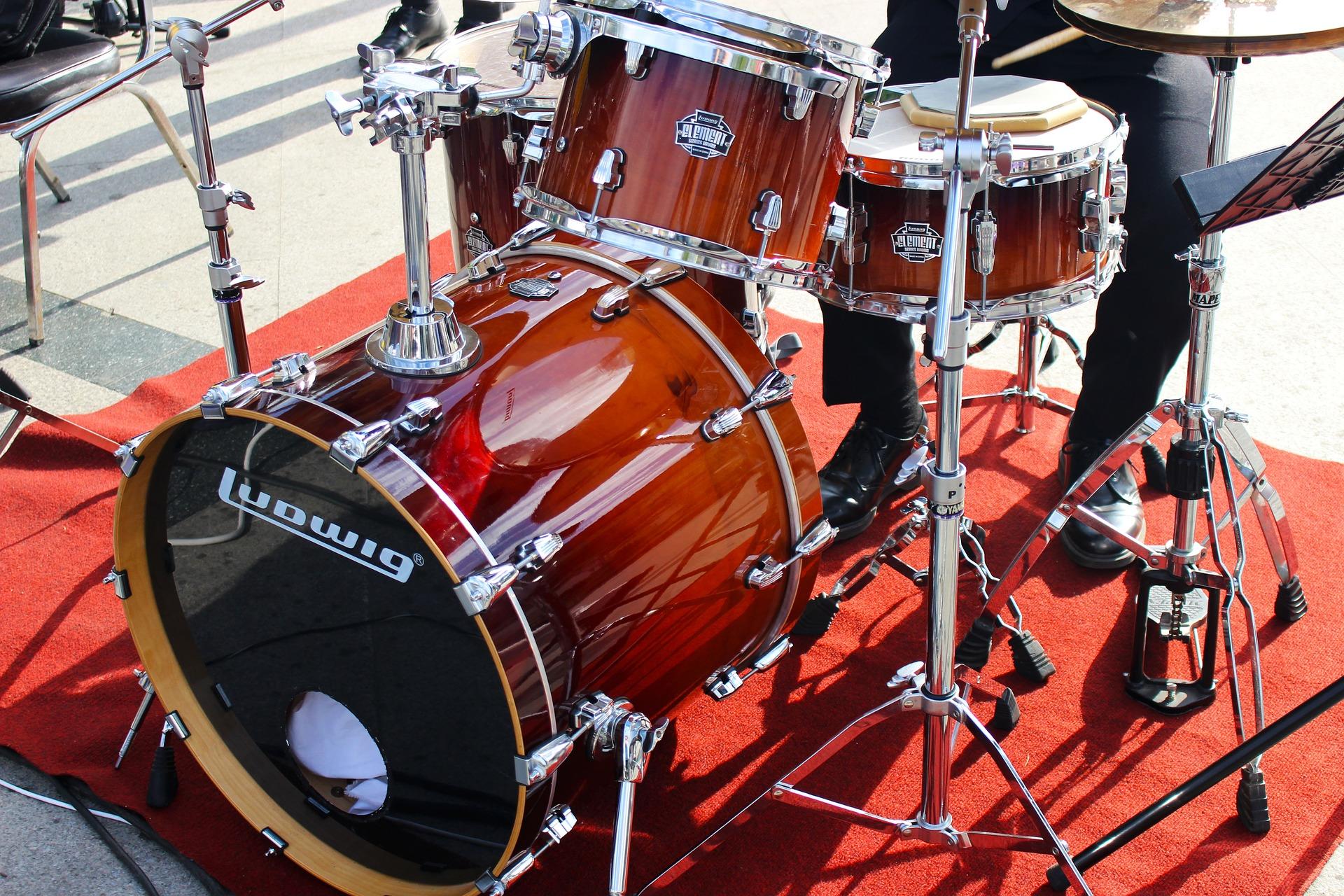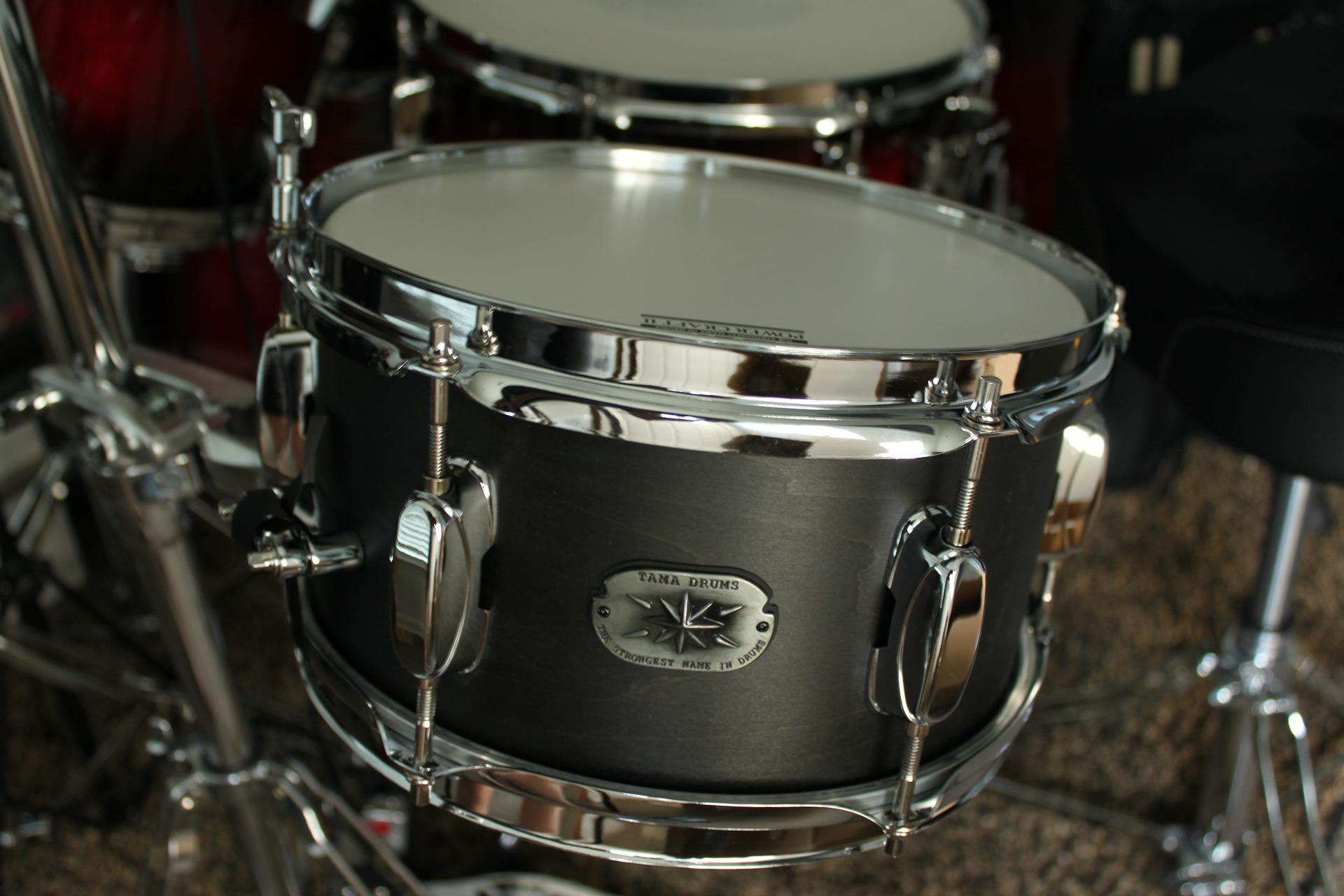“I told people I was a drummer before I even had a set, I was a mental drummer.” - Keith Moon
Metal is listened to more on Spotify than pop, folk, country, rock, hip-hop, and reggae. Metal is a style of rock that usually requires at least a guitarist, bassist, and drummer. The drums are often played with a double pedal in this kind of music. So how can you play hard rock or heavy metal on the drums?

What’s the Difference Between Hard Rock and Metal?
We should start by saying that hard rock and metal are two different styles of music. 
- AC/DC
- Aerosmith
- Guns N’ Roses
- Led Zeppelin
- Kiss
Whereas metal tends to include bands like:
- Black Sabbath
- Iron Maiden
- Judas Priest
- Metallica
- Motörhead
Metal continued to evolve over the year and create different and more violent genres (black metal, death metal, thrash metal, etc.) as well lighter versions (latin metal, funk metal, neoclassical metal). In this article, we’ll be mainly looking at metal drum beats because hard rock beats are often very similar to rock beats. Check our guide to writing drum music.
Master Rock Beats before Mastering Metal Beats
Metal has its roots in rock music. 
Working on a Binary Rhythm
The typical “dum-tsh” is the kind of rhythm we’re thinking of here. In both rock and metal, measures have four beats. As it’s a binary rhythm, you’ll count “1-and-2-and-3-and-4-and...” When you first learn to play the drums, you’ll learn about these three parts of your kit:
- The hi-hat
- The snare
- The bass drum
Regularly hit the hi-hat on both the beats (the numbers) and the offbeats (the “ands”). Your typical dum-tsh beat looks like this.
- 1: Hi-hat and bass drum
- “And”: Hi-hat
- 2: Hi-hat and bass drum
- “And”: Hi-hat
- 3: Hi-hat and bass drum
- “And”: Hi-hat
- 4: Hi-hat and bass drum
- “And”: Hi-hat.
Start by just practising with your right hand on the hi-hat. For rock beats, you’ll want your hi-hat to be closed. You can do this by pressing your left foot down on the pedal. This will give you a dry and clean sound. For metal beats, you can slightly open the hi-hat by lifting your foot. This will give you a more energetic and metal sound from the cymbals. You can add the bass drum to beats 1 and 3 by pressing the bass drum pedal down with your right foot. Finally, you can add the snare on beats 2 and 4 by hitting it with your right hand. Your arms should be crossed with your right arm over your left.
Powerful Hits
When playing drums along to metal music, you have to hit the drums hard. You need to be able to feel the aggression when you hit the snare and the bass drum, even in a simple rock beat. Don’t hold back! Your right foot needs to be precise. It’s better to use the ball of your foot to strike the bass pedal. You can hit it more quickly and strongly. However, make sure not to lift your foot entirely from the pedal as you’ll waste precious time. Your left hand will be used to hit the snare cleanly and precisely. You need to make sure that you let the drumstick rebound off the skin of the snare drum rather than holding your drumstick rigidly as the latter will give you blisters! Discover different drum lessons here on Superprof.
Using a Double Bass Pedal in Metal Music
Metalheads will probably be very familiar with the sound of a double pedal on a bass drum. This type of pedal arose to get the sound of a double bass drum without needing two kick drums. Of course, you can still get a drum kit with two bass drums if you want. Discover different beginner drum lessons here on Superprof. 
Metal Beats without a Double Pedal
If you attend a drum school, your teacher mightn’t have a double pedal. That said, you can still learn metal beats without one. Firstly, rest your left foot lightly on the hi-hat pedal so that it’s slightly open. You’ll hit it on both the beats and offbeats. The snare is still played on the 2nd and 4th beats. This is exactly the same as rock’s typical “dum-tsh” beat. Things get trickier once we introduce the bass drum. In metal, you’re going to strike the bass drum on each 16th note. It’s going to be pretty quick. It’s advised that you practise at a lower tempo first. I recommend starting really slowly with each beat before bringing it all together to play the whole measure. Start with just the first beat, then the second. Put the first two beats together, then do the same with the third. Try adding the third beat to the measure. Finally, do the same with the fourth beat. Bit by bit, you’ll get the hang of it.
- 1:
- 1: Hi-hat and bass drum
- 2: Bass drum
- 3: Hi-hat and bass drum
- 4: Rest
- 2:
- 2: Hi-hat and snare drum
- 2: Bass drum
- 3: Hi-hat and bass drum
- 4: Bass drum Bass drum
- 3:
- 3: Hi-hat
- 2: Bass drum
- 3: Hi-hat and bass drum
- 4: Rest
- 4:
- 4: Hi-hat, bass drum, and snare drum
- 2: Bass drum
- “And”: Hi-hat
- 4: Rest
Complicated, isn’t it? To make the rests easier to deal with, you can always just hit the air. Work on this rhythm with your metronome set to 50bpm before upping it to 75bpm and then 100bpm, etc. Before you increase the speed:
- Make sure that you always hit the bass drum with the same force.
- Make sure that the gaps between beats and offbeats are consistent.
- Make sure that your bass drum and snare are coordinated.
Playing with the Double Pedal
When using a double pedal, you play the bass drum with both feet. This allows you to strike the bass drum more quickly. A lot of metal drummers have one of these. Find different drum lessons for kids here on Superprof. 
- Heel down
- Heel up, which is commonly used in rock music
- Heel-toe
- Swivel: when you pivot your foot
- Flatfoot: which uses your hip muscles
- Etc.
Double pedals require a completely new technique for drummers and require them to further improve their coordination. 
Vocabulary
Beater
A beater is the part of the bass drum pedal designed for striking the drum skin.
Metronome
A metronome is a device used to help musicians keep time.
















